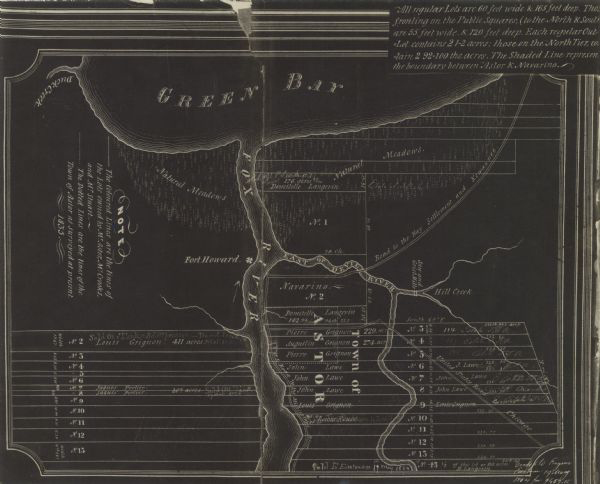
By Kris Leonhardt
Editor-in -chief
Continued from last week
In 1838, Astor and Navarino, situated to the north of Astor, combined to form Green Bay and the sandy hill that once served as a prime location for burials now became a prime location for residential property.
By this time, many of the wooden crosses and markers had likely rotted away and stone markings may have been repositioned, rendering it impossible to identify the location of all burial spots.
While many of the bodies were disinterred and reinterred in a mass grave at the Allouez Catholic Cemetery, others remained to be found later as the city grew and progressed.
Even the location of the mass grave was lost to time until years later when a road was being created in the Allouez cemetery and a 20-foot trench was located containing human remains.
Upon the 1886 discovery of skulls and bones in front of a lot where the F.W. Basche home was being constructed, local pioneer John Jacobs said that at one time all people were buried there together, “both Indians and whites,” he stated.
The skeletal remains were two feet or less below the surface, “from which we judge that during the last half-century the sand must have washed away into the river to a depth of three or four feet,” a Green Bay Advocate article read.
The article stated that many homes were constructed in the three years following the platting of Astor, leaving the burial area unmarked.
“About the year 1836, the plat of ground now used as a cemetery in Shantytown (Allouez) was purchased, and most of the remains removed there from the [La Baye burial grounds], since which time there have been no interments here. It is probable, however, that only those were removed whose friends were able or willing to bear the expenses and the streets were laid out and the buildings erected right over the remains of the others. Occasionally, in digging a post hole, well or foundation for a building, human remains have been found.”
As recent as 2006, remains have turned up during utility or construction work.
On April 11, 2006, city work crews discovered a leg, hand and rib cage while digging on the 400 block of South Adams Street about eight feet below the ground surface while performing water utility work.
